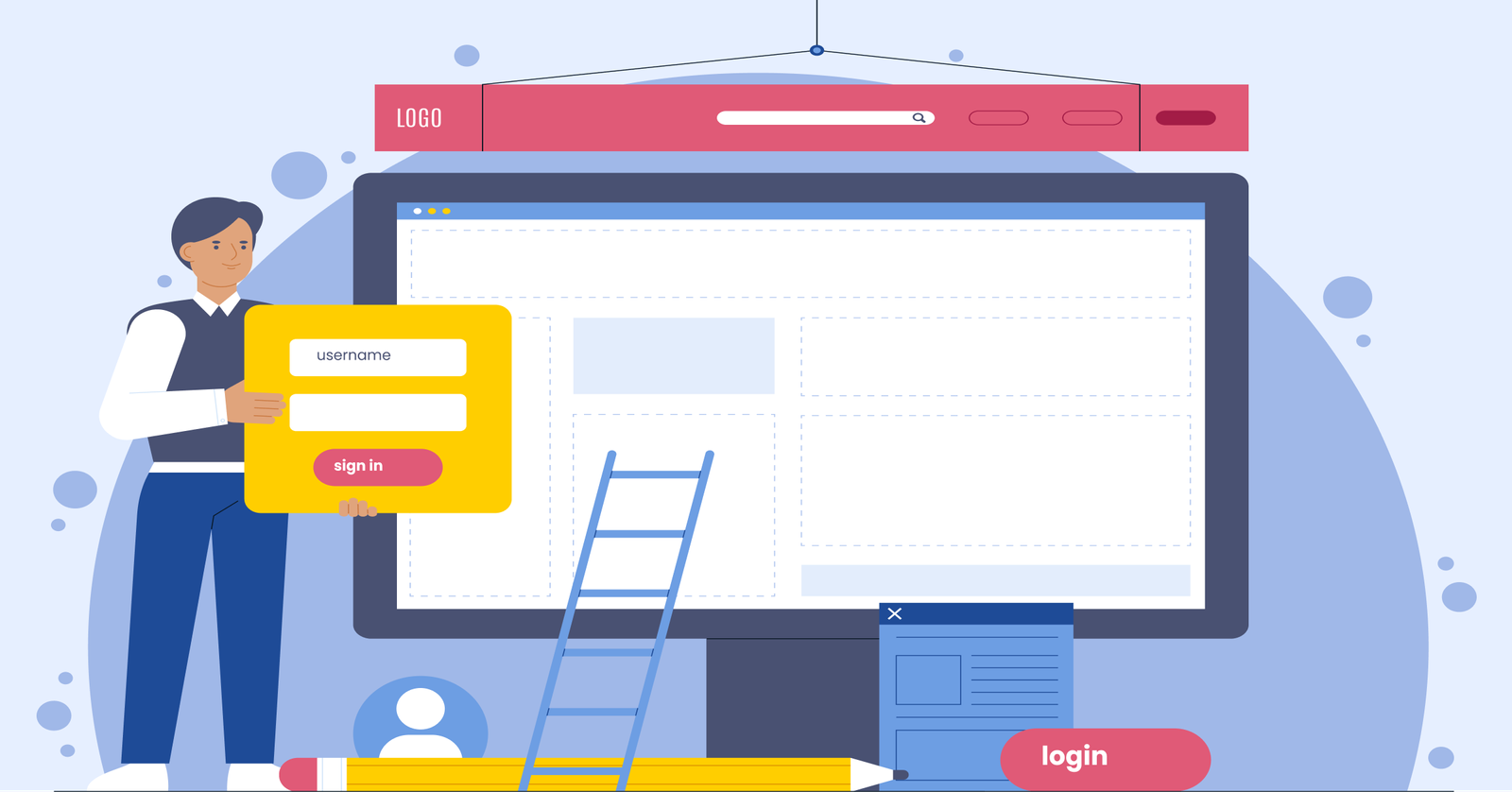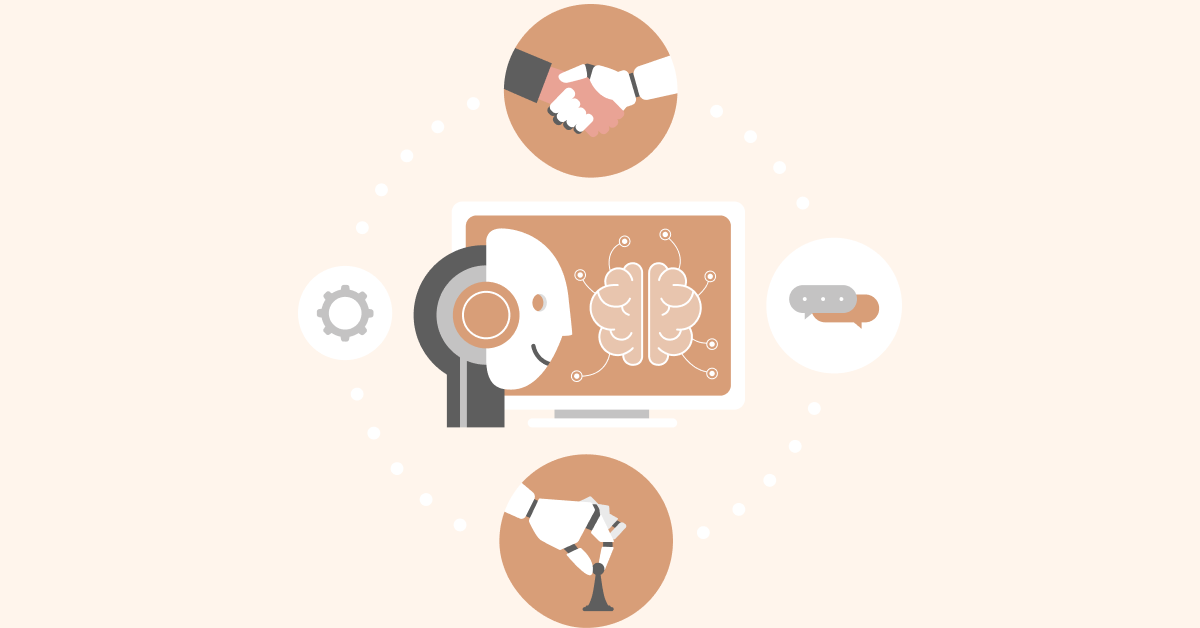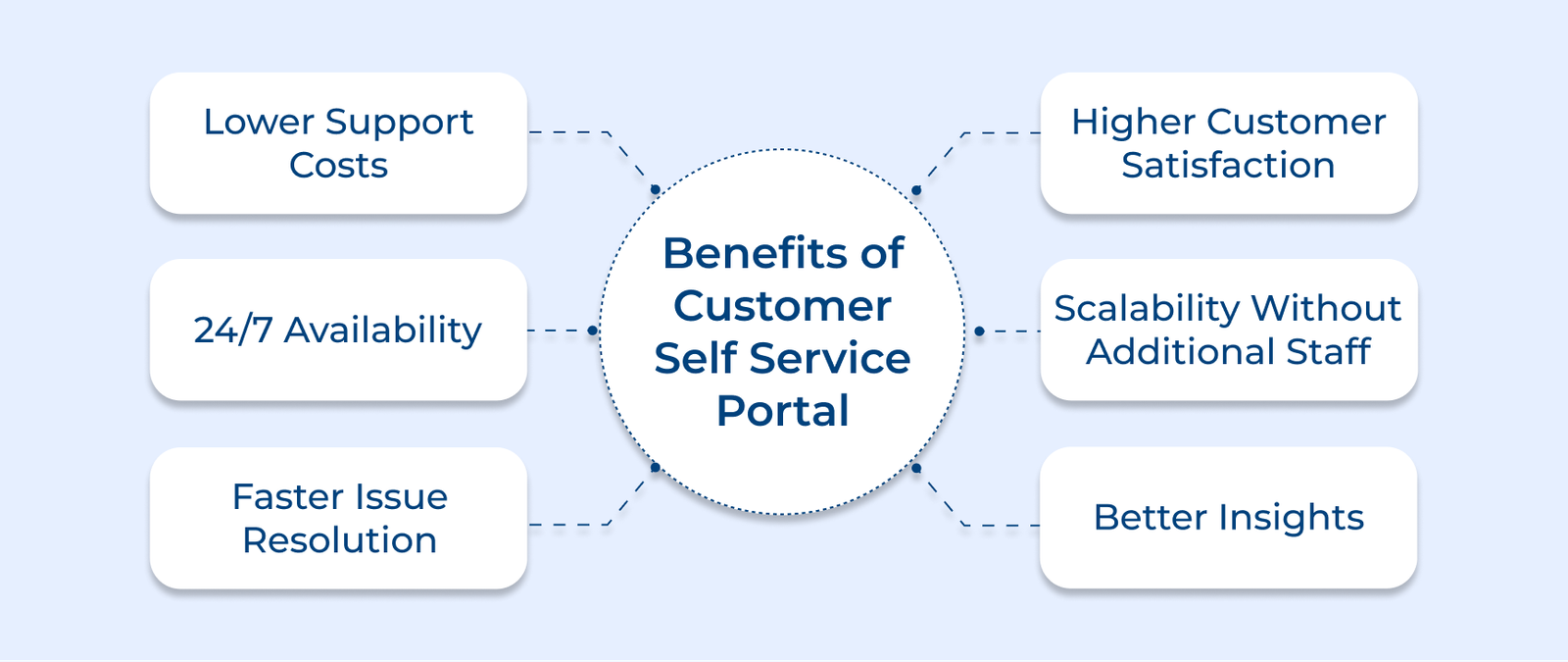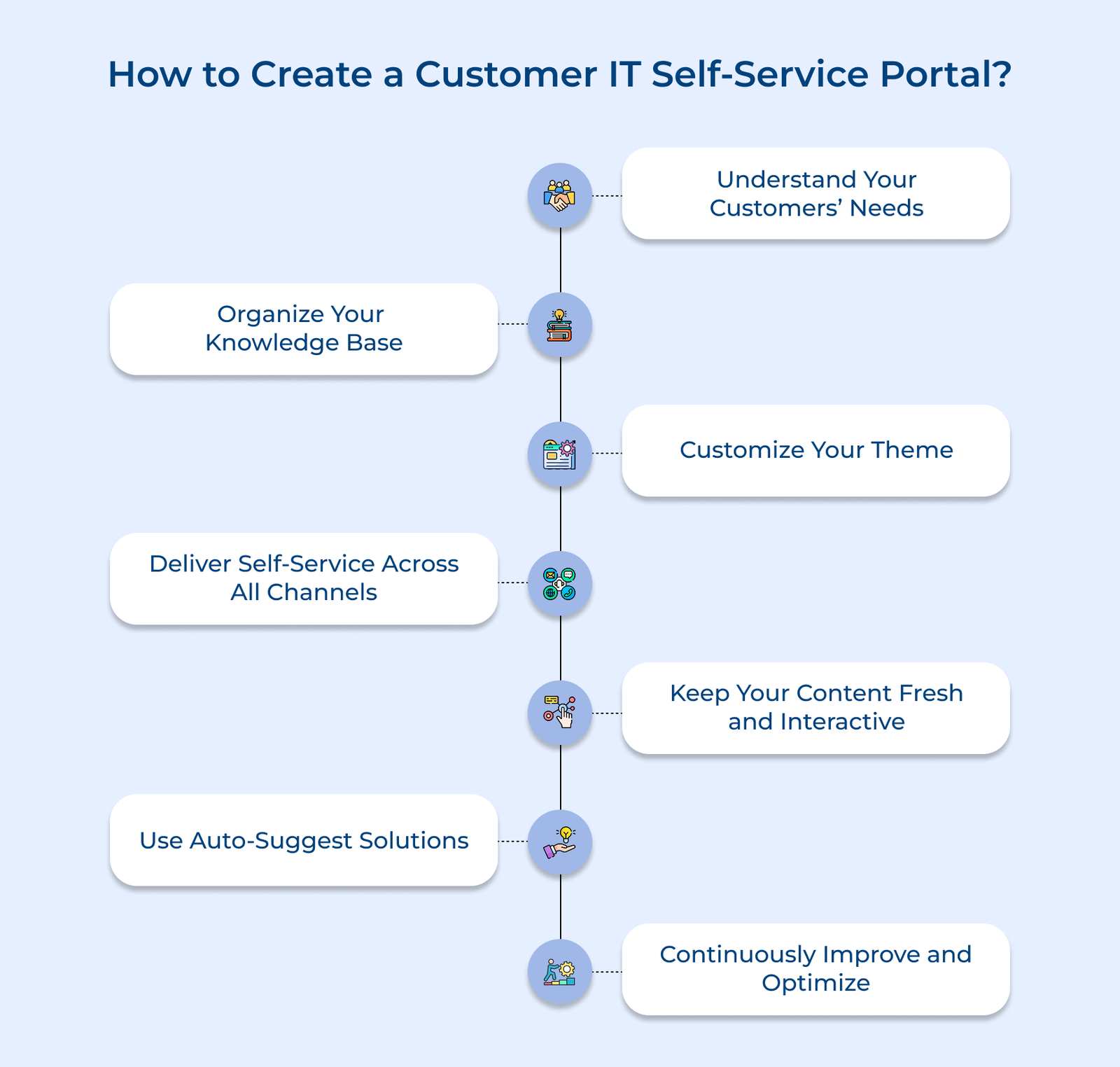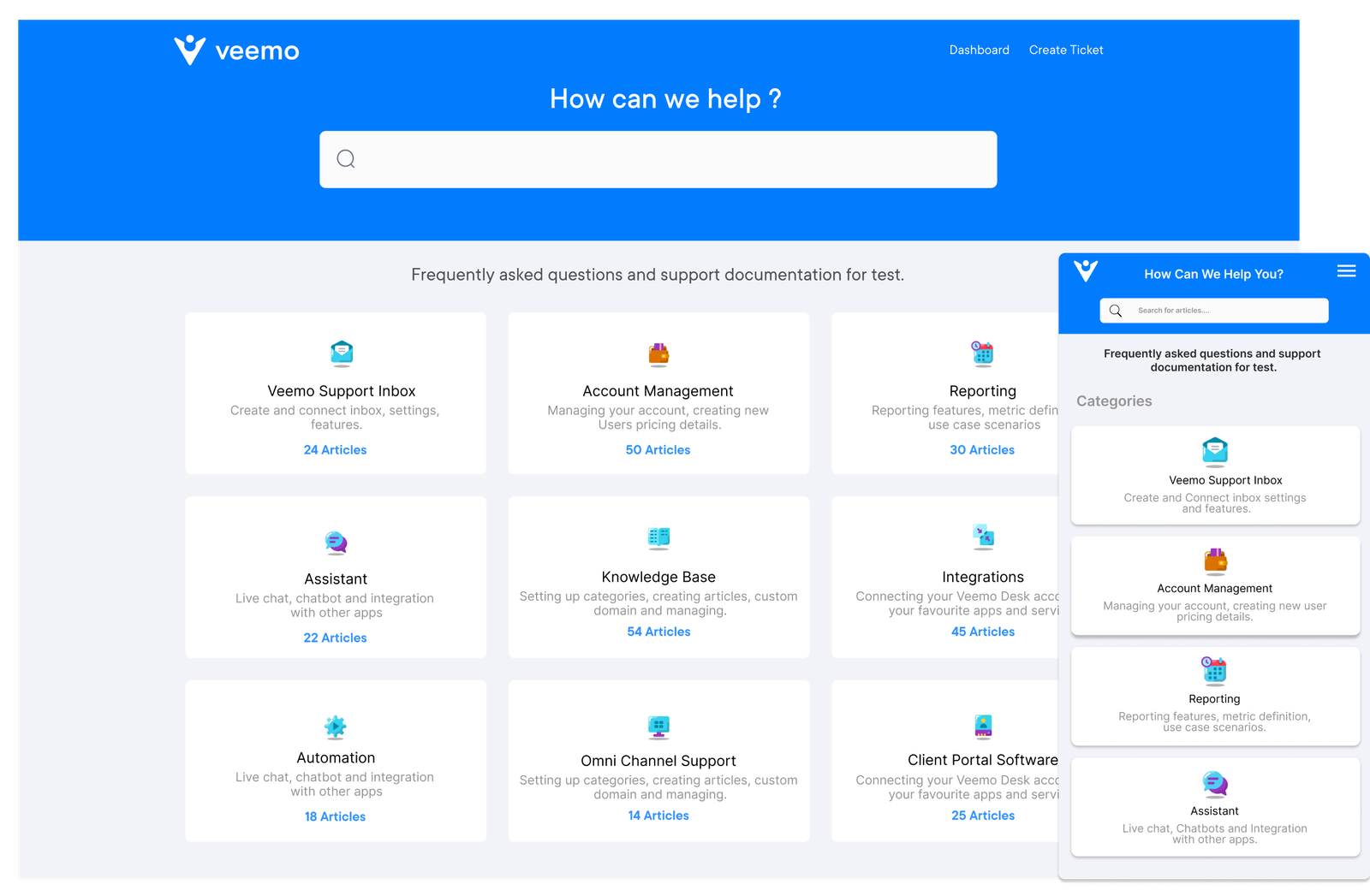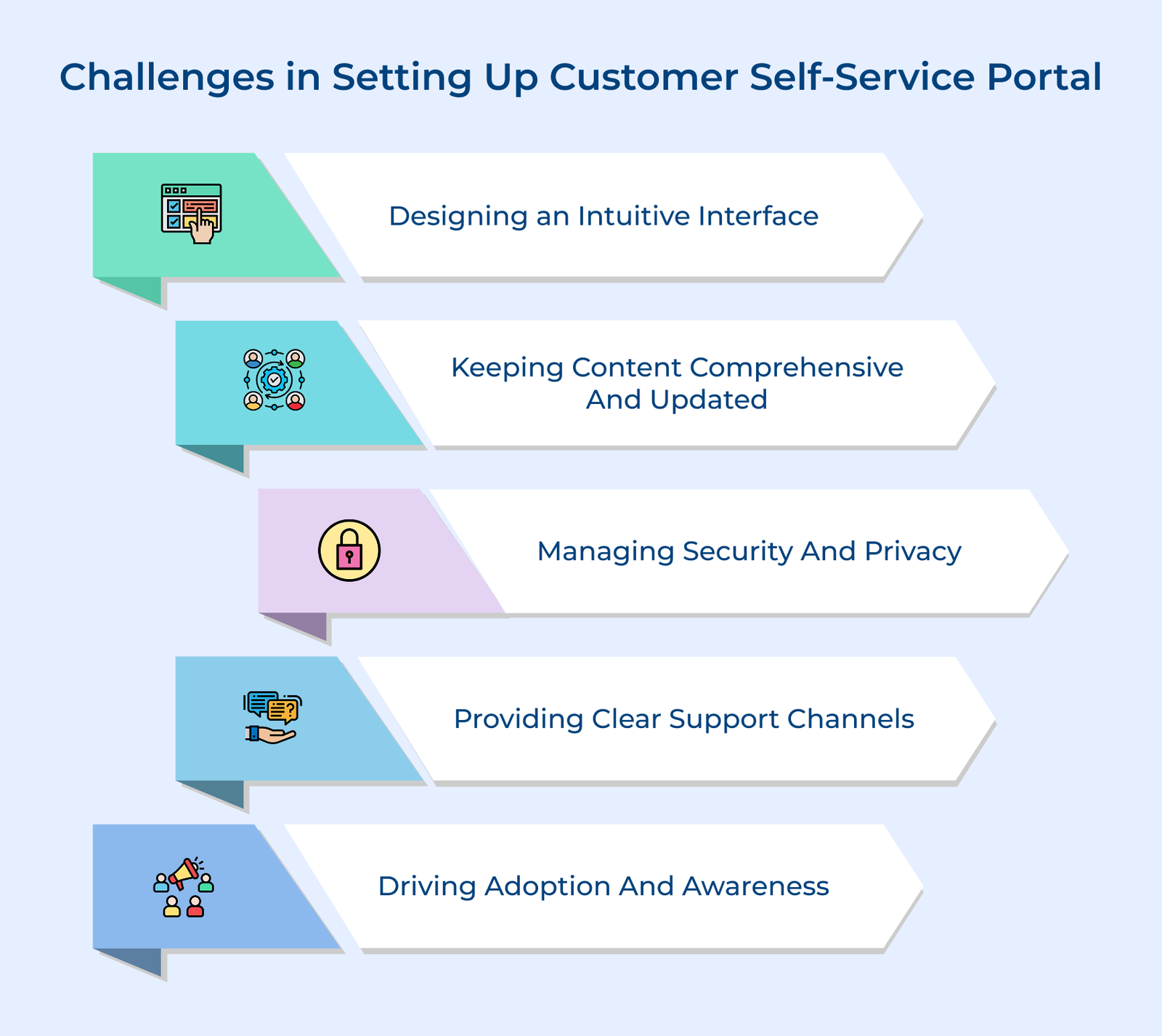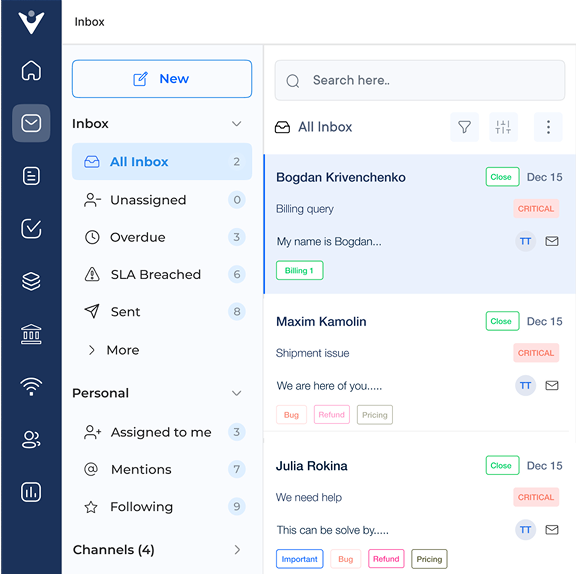1. Understand Your Customers’ Needs
A self-service portal only works if it reflects what customers actually want. You can design a platform that feels useful, intuitive and worth their time by focusing on their needs or pain points.
Understanding their needs allows you to optimize the self-service portal’s design, content and functionality to enable customers to find answers effortlessly. You build trust and enhance their experience to resolve issues independently, resulting in improved customer satisfaction.
Pro tips:
- Research thoroughly: Gather insights into customer preferences, behavior and recurring issues. It helps you decide what content and tools to include.
- Personalize the experience: Organize and present information in ways that feel relevant to different customer groups.
- Keep it updated: Customer needs change, so regularly review and refresh content to keep the portal accurate.
2. Organize Your Knowledge Base
A well-structured knowledge base helps customers quickly find answers, reducing the need to contact support. It also improves customer satisfaction and empowers users to solve their own problems.
Conduct surveys, analyze customer data and engage in regular communication to gain valuable insights. Understanding customer needs helps optimize portal design, content and features so they can find answers easily. You build trust, enhance their experience and empower them to resolve issues independently, resulting in improved customer satisfaction.
Actionable tips:
- Categorize and tag content: Group articles into logical sections with clear tags. It makes it easier for users to search and browse.
- Keep language simple: Write articles in plain, consistent language without jargon. Consistency in style and terminology makes the content easier to follow.
- Review regularly: Update articles to reflect product or process changes. Outdated information frustrates customers and erodes trust.
3. Customize Your Theme
Customizing your theme is an important step in creating a successful customer self-service portal, as it allows you to create a visually appealing and user-friendly platform. It aligns with your brand identity and meets the specific needs of your customers. You can improve navigation, make information easy to find and enhance the customer experience.
Customize your theme by selecting a layout that matches the overall look and feel of your website. Choose relevant colors, fonts and images that reflect your brand personality. Customize the content and layout to make it easy for customers to find the information they need.
Best practices:
- Consistent branding: Match your portal’s colors, fonts and imagery with your brand so customers instantly recognize they’re in the right place.
- Simple navigation: Organize menus and headings clearly so users can quickly reach the right resources without confusion.
- Mobile-friendly design: Make sure the portal works smoothly on all devices and screen sizes so customers can access help wherever they are.
4. Deliver Self Service Across All Channels
Delivering self service across all channels is a crucial step in creating a successful customer self-service portal. Customers expect to find answers to their problems conveniently. Offering self-service on websites and social media lets customers resolve issues independently, boosting satisfaction while reducing support costs.
A successful self-service portal delivers support across all channels, letting customers find information and solve issues independently. Organizations need to ensure seamless integration of their self-service capabilities across various touchpoints like websites and social media. It empowers them, reduces their reliance on support teams and improves their satisfaction.
Best practices:
- Consistent, intuitive experience: Design a user-friendly portal with clear navigation and simple instructions across all channels.
- Organized knowledge base: Maintain a comprehensive repository of FAQs, guides and tutorials that customers can access quickly.
- Seamless integration and automation: Connect the portal with live chat, email and other support channels. Use AI and chatbots to provide instant, personalized assistance without manual intervention.
5. Keep Your Content Fresh and Interactive
A self-service portal is only as useful as the information it holds. It is important because updated and engaging content keeps customers encouraged to explore the portal further, leading to increased customer satisfaction.
Adding interactive elements like videos, step-by-step tutorials or quizzes makes the portal easier to use and helps customers solve problems more effectively. Fresh, engaging content not only improves the experience but also builds trust in the portal as a reliable source of help.
Key takeaways:
- Update regularly: Review FAQs and articles often so information stays current.
- Use multimedia: Add visuals, short videos and interactive guides to simplify complex topics.
- Involve customers: Encourage users to share tips, reviews or solutions that can help others.
6. Make it Easy for Customers with Auto-Suggest Solutions
Making it easy for customers is crucial because it simplifies the customer experience and improves customer satisfaction. Customers can find the information they need quickly, reducing the need for manual searches for customers as well as the company.
Auto-suggest solutions provide customers with instant recommendations or suggestions as they type in their queries or keywords. It helps customers find relevant information efficiently, saving them time. Businesses can enhance the user experience and promote self-service usage to reduce the reliance on customer support agents. It improves customer satisfaction and loyalty by providing a seamless self-service experience.
Pro tips:
- Use smart algorithms: Ensure suggestions improve over time by learning from customer searches and interactions.
- Adapt to user behavior: Personalize results based on past activity and preferences.
- Keep it updated: Review queries regularly and refine suggestions to stay useful.
7. Continuously Improve and Optimize
Creating a successful customer self-service portal is not a one-time task. Regularly review analytics and feedback to spot areas for improvement. Track usage patterns, spot pain points and adjust to improve the experience. Periodic updates and feature enhancements will ensure that your self-service portal remains efficient.
Continuously optimizing involves refining the portal’s functionality, content and user experience based on customer feedback. Regular updates keep the portal relevant, user-friendly and effective, boosting customer satisfaction.
Actionable tips:
- Gather customer feedback often and use it to guide updates.
- Monitor usage data to identify pain points or confusing steps.
- Keep an eye on industry best practices to ensure the portal stays modern and user-friendly.
Examples of Self Service Portal
Below are the various examples of successful customer self-support portals, highlighting their features they bring to both companies and consumers.
